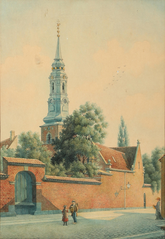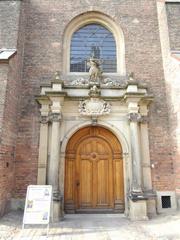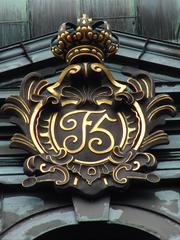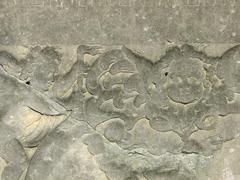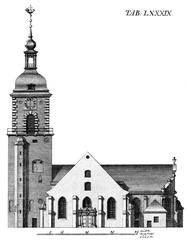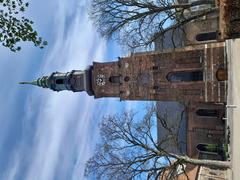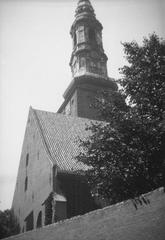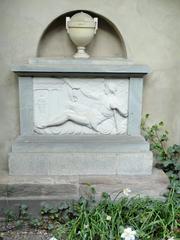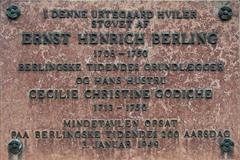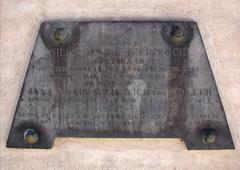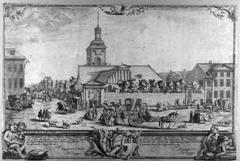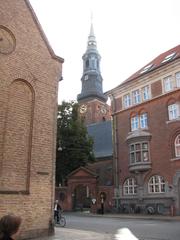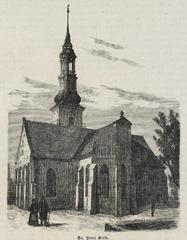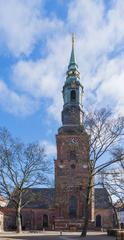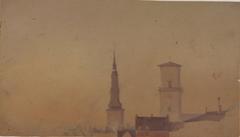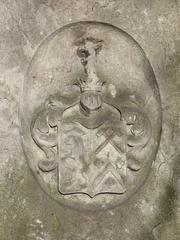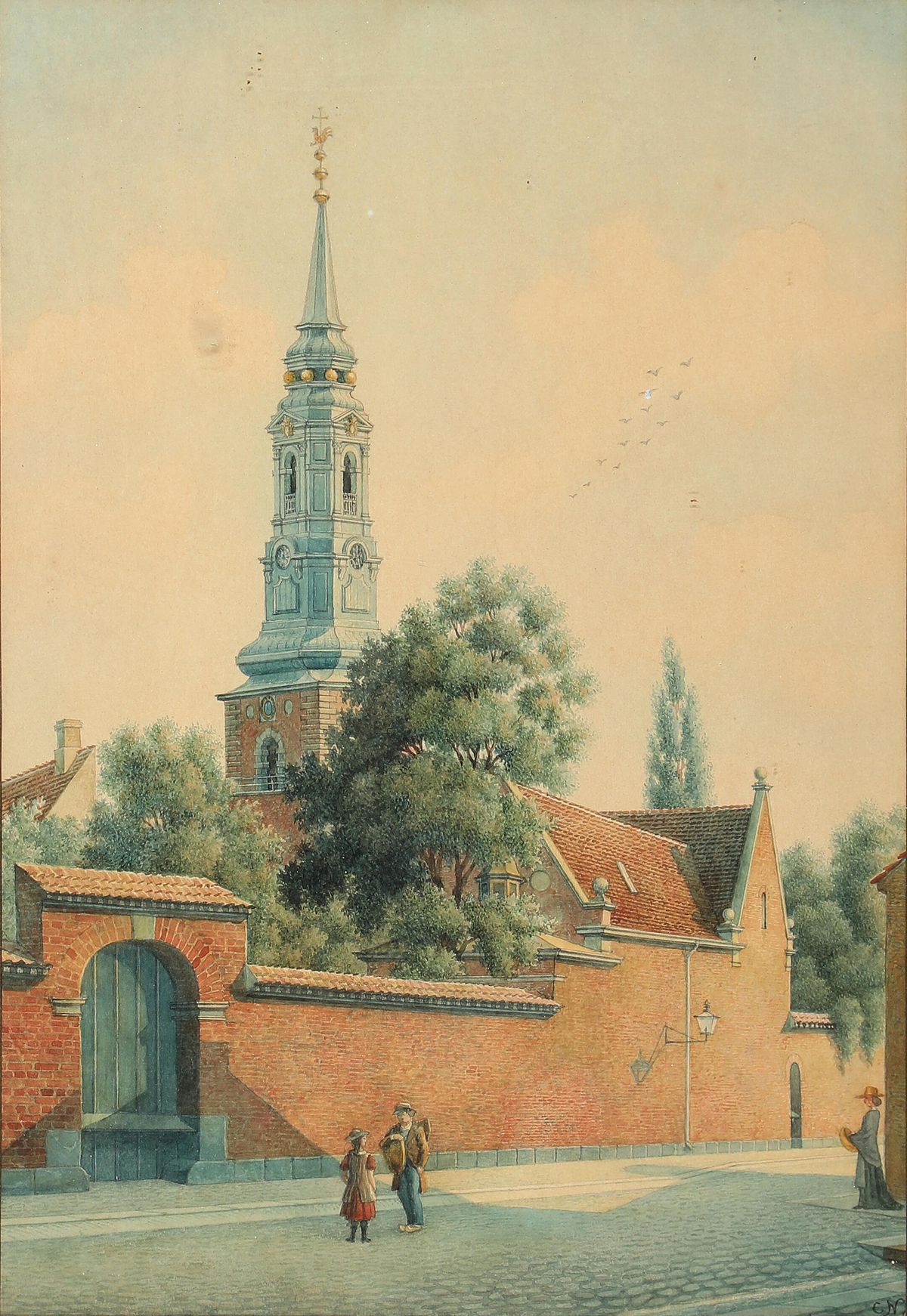
St. Peter’s Church Copenhagen: Visiting Hours, Tickets, and Historical Guide
Date: 14/06/2025
Introduction
St. Peter’s Church (Sankt Petri Kirke), centrally located in Copenhagen’s historic Latin Quarter, stands as the city’s oldest preserved church and a vibrant symbol of its multicultural and religious heritage. Dating back to the 13th century, the church has long served as the spiritual home of Copenhagen’s German-speaking Lutheran community and is renowned for its harmonious blend of Gothic, Baroque, and Rococo architectural styles. This comprehensive guide provides essential visitor information—covering St. Peter’s Church visiting hours, tickets and entry, accessibility, and guided tours—alongside insights into its historical evolution, cultural significance, and architectural highlights. Whether you are a history enthusiast, architecture lover, or curious traveler, St. Peter’s Church is an essential stop on any Copenhagen itinerary.
Table of Contents
- Introduction
- Visiting St. Peter’s Church: Practical Information
- Historical Overview
- Architectural and Artistic Highlights
- Cultural and Religious Significance
- Guided Tours and Visitor Experience
- Frequently Asked Questions (FAQ)
- Visuals and Media
- Summary and Recommendations
- References and External Links
Visiting St. Peter’s Church: Practical Information
Visiting Hours and Entry
- Typical Opening Hours:
- Monday–Friday: 11:00 AM – 3:00 PM
- Saturday: 11:00 AM – 3:00 PM
- Sunday: Open for services and special events (hours may vary)
- Note: Hours may change due to services, events, or holidays. Always verify on the official church website before your visit.
Tickets and Admission
- Entry: Free of charge for all visitors. Donations are welcomed to support the preservation of the church.
- Special Events & Tours: Some guided tours, concerts, or special programs may require advance booking and a nominal fee.
Accessibility
- The main church entrance is wheelchair accessible, with ramps and accessible restrooms available.
- Some historic areas—such as burial chapels and crypts—may have steps or limited access; inquire in advance for specific needs.
Tips for Visiting
- Visit on weekday mornings for a quieter, contemplative experience.
- Non-flash photography is generally permitted, but please be respectful during services and in burial chapels.
- Modest attire is recommended as a sign of respect.
- Guided tours (in Danish, English, and sometimes German) are available by prior arrangement and offer in-depth historical and architectural context.
Nearby Attractions
Combine your visit with other notable Copenhagen sites:
- The Round Tower (Rundetaarn)
- University of Copenhagen
- The National Museum of Denmark
- Strøget pedestrian street
- Church of Our Savior and St. Nicholas Church
Historical Overview
Origins and Early History
St. Peter’s Church traces its origins to the late 12th or early 13th century, making it one of the oldest ecclesiastical structures in Denmark (Visit Copenhagen). Originally a Catholic parish church dedicated to Saint Peter, it played a central role in Copenhagen’s medieval expansion.
Reformation and German Congregation
After the Protestant Reformation in 1536, St. Peter’s Church was repurposed to serve the city’s burgeoning German-speaking Lutheran community. Since 1585, it has functioned as Copenhagen’s principal German-language church, reflecting the city’s status as a cosmopolitan trading hub and its important German minority (Sankt Petri Kirke).
Fires, Rebuilding, and Restoration
The church has endured several destructive fires, most notably the Copenhagen Fire of 1728. Each rebuilding phase—especially those in the 17th and 18th centuries—introduced new architectural elements, including Baroque and Rococo features. The iconic copper-clad spire, completed in 1757, remains a defining feature of the city’s skyline (architectureofcities.com).
Architectural and Artistic Highlights
Exterior and Spire
- Red Brick Façade: Exemplifies late medieval Danish ecclesiastical architecture.
- Rococo Spire: The 1757 copper spire is a city landmark visible from across Copenhagen.
- Baroque Portal: The main entrance, with its 1731 woodcarving by Diderik Gercken, is a masterpiece of Baroque artistry.
Interior Features and Chapels
- Nave and Vaults: The whitewashed nave, vaults, and stone floors create a serene atmosphere.
- Renaissance Altar: Among Europe’s largest, richly carved and gilded.
- Historic Organ: An 18th-century instrument still used for concerts and services.
- Frescoes: Remnants of 15th-century wall paintings add to the church’s historical aura.
Sepulchral Vaults
- Burial Chapels: Extensive crypts house tombs of German merchants and artisans, highlighting the church’s role among Copenhagen’s elite.
- Epitaphs and Monuments: Elaborate funerary art reflects the tastes and history of the German-Danish community.
Cultural and Religious Significance
Community Role
For over four centuries, St. Peter’s has been the heart of Copenhagen’s German-speaking Lutheran community, with services, baptisms, weddings, and funerals conducted in German. The congregation remains active, hosting religious and cultural events year-round (Sankt Petri Kirke).
Events and Concerts
The church’s acoustics and historic organ make it a sought-after venue for concerts, art exhibitions, and lectures—often focused on German-Danish relations and European cultural heritage. Check the event calendar for upcoming programs.
Guided Tours and Visitor Experience
- Guided Tours: Available by appointment in Danish, English, and occasionally German. Tours cover architectural evolution, the church’s connection to the German community, and unique burial traditions.
- Interpretive Materials: Brochures and self-guided tour leaflets are offered in multiple languages.
- Quiet Reflection: The church’s peaceful atmosphere and fewer crowds make it ideal for contemplation and quiet exploration.
Frequently Asked Questions (FAQ)
Q: What are the St. Peter’s Church visiting hours?
A: Generally Monday–Saturday, 11:00 AM–3:00 PM. Hours may change during holidays and special events; always check the official website.
Q: Is there an admission fee?
A: Entry is free; donations are appreciated.
Q: Are guided tours available?
A: Yes, by prior arrangement in Danish, English, and sometimes German.
Q: Is the church accessible for visitors with disabilities?
A: The main entrance and nave are accessible; some chapels and crypts may have steps.
Q: Is photography allowed?
A: Non-flash photography is generally permitted except during services or in sensitive areas.
Q: Are services held in German or Danish?
A: Regular Lutheran services are conducted in German; some events are bilingual.
Visuals and Media
- Official St. Peter’s Church Website – Includes photo galleries and virtual tours.
- Visit Copenhagen Photo Gallery
- [Alt text examples: “St. Peter’s Church Copenhagen spire and façade”, “Interior nave of St. Peter’s Church with stained glass”]
Summary and Recommendations
St. Peter’s Church is more than a historic landmark; it is a living testament to Copenhagen’s multiculturalism and religious diversity. Visitors can immerse themselves in centuries of art, architecture, and community life—exploring the Baroque portal, Renaissance altar, sepulchral chapels, and tranquil churchyard. Its accessible location, free admission, and rich program of tours and cultural events make it a highlight for any traveler.
Visitor tips:
- Allocate at least 45–60 minutes for your visit.
- Consult the official website for up-to-date visiting hours and events.
- Download the Audiala app for guided audio tours and enhanced visitor experiences.
- Consider combining your visit with nearby historical attractions in Copenhagen’s Latin Quarter.
References and External Links
- St. Peter’s Church – architectureofcities.com
- Official St. Peter’s Church Website
- Visit Copenhagen – St. Peter’s Church
- Copenhagen Official Tourism – Sankt Petri Church
- Sankt Petri Kirke Events
- Nomad Epicureans – Copenhagen Walking Tour
Experience the enduring spirit of Copenhagen’s history, culture, and architecture at St. Peter’s Church. Plan your visit today and immerse yourself in one of Denmark’s most treasured sites.
